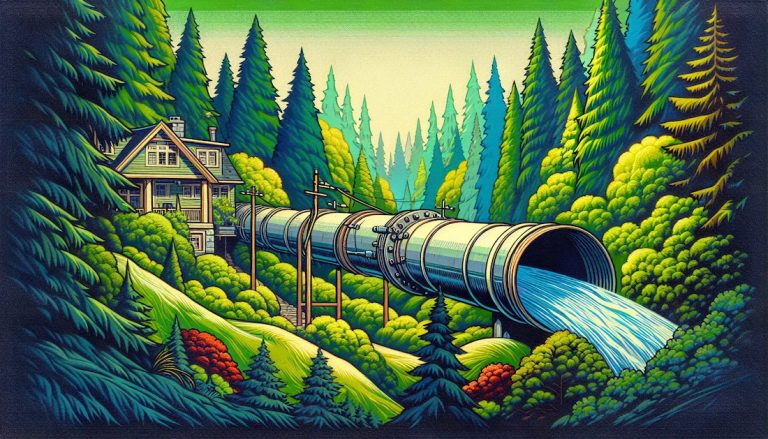
Vancouver, B.C. — In Vancouver’s False Creek neighborhood, a pioneering approach is transforming how cities think about energy: harnessing the heat from sewage wastewater to warm homes and reduce carbon emissions.
This innovative system, in place since 2010, captures the warmth that flows through city sewers-heat that would otherwise escape unused-and repurposes it as a renewable energy source for thousands of residents.
False Creek’s 6,210 apartments are primarily heated by this clean, renewable energy, making sewage heat the largest contributor to the area’s energy needs. The process is simple yet effective: everything that goes down the drain, from hot showers to dishwashers, carries heat with it. Traditionally, this energy is lost as wastewater travels to treatment plants.
In False Creek, however, heat pump technology intercepts this warmth before it reaches the treatment facility. The system cools sewage water (typically around 20°C/68°F), concentrates the heat, and uses it to produce hot water for buildings-sometimes as hot as 80°C (176°F).
This method is remarkably efficient.
For every unit of electricity used to run the heat pumps, more than three units of thermal energy are produced. The consistency of sewage temperature means the system works even during cold winters, providing a reliable source of renewable heat when it’s needed most1.
Globally, the potential for wastewater heat recovery is enormous. In the UK, experts estimate that the energy in daily sewage wastewater could heat 1.6 million homes each year. In the US, Americans flush away enough energy annually to heat 30 million homes. Yet, this resource remains largely untapped, often overlooked in urban planning and energy policy.
The environmental benefits are significant.
Buildings account for over 50% of Vancouver’s greenhouse gas emissions, mainly due to reliance on natural gas for heating. By switching to sewage heat recovery, the city is taking a major step toward its goal of fully renewable neighborhood energy sources by 2030. The False Creek system is currently expanding, with heat pump capacity set to triple from 3 megawatts to over 9 megawatts, further reducing emissions and reliance on fossil fuels.
Financially, the model is sound. While there are upfront costs, residents pay utility rates for the low-carbon energy, and recent expansions have been supported by grants aimed at reducing greenhouse gases. Centralizing heat production also allows for professional maintenance and shields customers from volatile fuel prices. Rooftops once reserved for noisy boiler equipment can now be transformed into green communal spaces.

Other cities are taking note.
In Denmark, the Marselisborg wastewater treatment plant generates more energy than it consumes by capturing waste heat and producing biogas from sludge. In Sweden, Stockholm’s underground heat recovery system provides warmth for 800,000 residents and fuels buses with biogas. These models show that with the right infrastructure and policy support, cities worldwide can turn wastewater into a valuable, circular energy resource.
The main challenge ahead is integrating this approach into urban planning and securing the necessary investment. Experts emphasize the need for political will and forward-thinking policies to make sewage heat recovery a standard part of city infrastructure. As more municipalities look to decarbonize and improve energy efficiency, False Creek’s success offers a blueprint for sustainable, resilient, and cleaner urban living.
Vancouver Turns Sewage Heat Into Clean Energy For Homes (May 2, 2025)